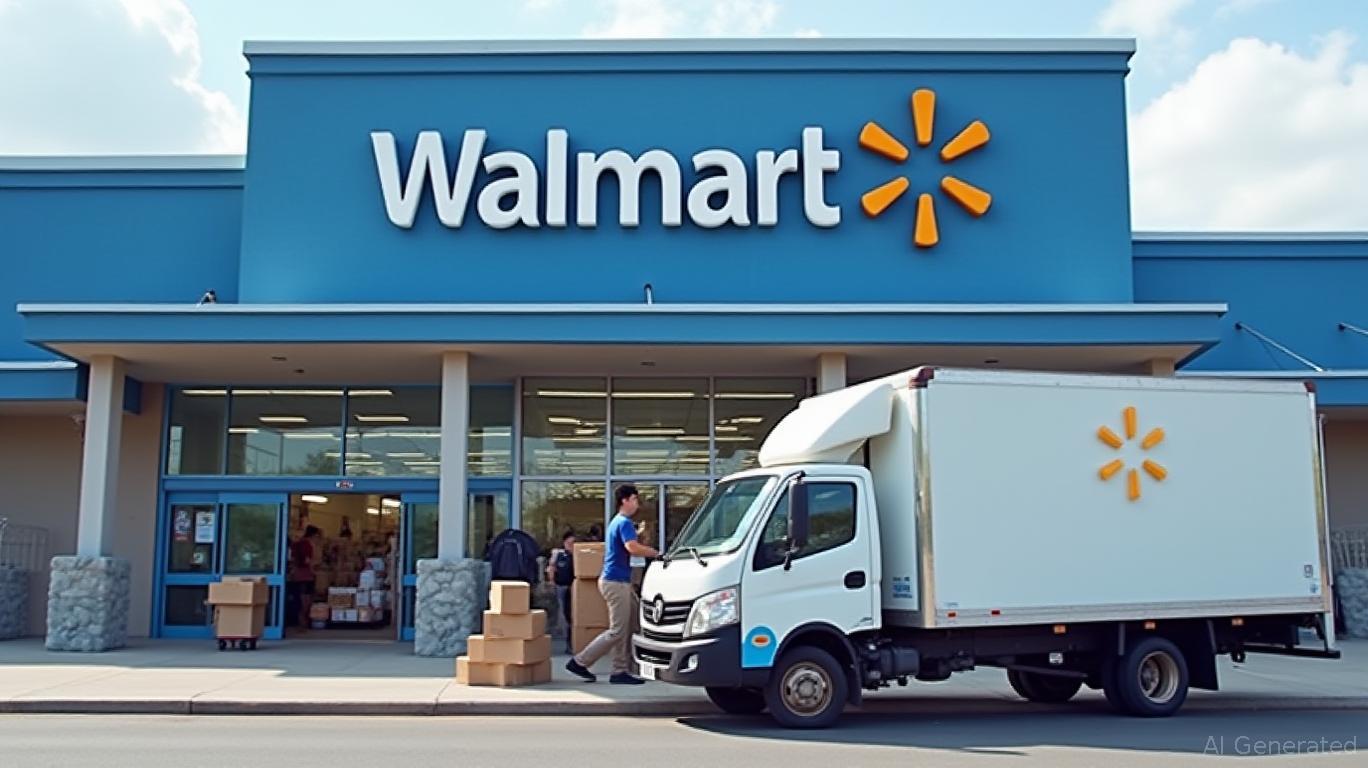Walmart's Resilience Amid Tariffs: A Barometer for Retail Sector Opportunities
Walmart’s Q1 2025 earnings report has emerged as a critical bellwether for the retail sector, demonstrating an extraordinary ability to navigate tariffs, inflation, and shifting consumer behaviors. With retail media revenue surging 24% year-over-year, cost controls driving a 13.7% jump in operating income, and e-commerce sales soaring 22%, Walmart’s performance underscores its strategic mastery of a fragmented industry. For investors, this resilience is not merely a defensive shield but a compass pointing to undervalued opportunities in a sector primed for consolidation and innovation.
Ask Aime: "Can Walmart's earnings reports be trusted for retail sector investment?"

Retail Media: The High-Margin Engine Igniting Profit Growth
Walmart’s advertising business, now a $3.4 billion annual revenue stream, is the clearest evidence of its transition from a brick-and-mortar giant to a tech-driven commerce platform. The 24% YoY growth in retail media—outpacing peers like Target (which reported no specific Q1 media figures but faces tariff-driven margin pressures) and Costco ($1.35 billion in media-linked operating profit for Kroger, but still trailing Walmart’s scale)—reflects its dominance in leveraging first-party data and omnichannel reach.
This segment’s margins are a profit multiplier: contributing one-third of Walmart’s operating income gains, it is now a critical hedge against macroeconomic volatility. For investors, this signals a shift in retail’s value chain—brands that control consumer touchpoints and data will dominate, with Walmart leading the charge.
Cost Controls: A Strategic Weapon in a Cost-Conscious World
While inflation has eased to 3.4% in the U.S., Walmart’s operational discipline has turned cost-cutting into a competitive moat. Layoffs, automation (targeting a 30% reduction in online fulfillment costs by year-end), and inventory optimization (global stockpiles down 2.7% YoY) have delivered a 13.7% rise in operating income despite only 6% revenue growth. Contrast this with Target’s struggles: its Q1 2025 EPS faced “meaningful year-over-year profit pressure” due to tariffs and supply chain inefficiencies.
Ask Aime: Will Walmart's earnings report inspire a retail sector rally in 2025?
Walmart’s focus on “operating discipline”—with a 15% ROI on growth initiatives—also highlights its prioritization of capital efficiency. Even as it shuts underperforming ventures like Walmart Health, it reinvests in high-impact areas like tech (e.g., the $2.3 billion Vizio acquisition), proving that austerity fuels innovation.
E-Commerce Momentum: The Final Nail in the “Offline-Only” Coffin
Walmart’s U.S. e-commerce sales are now profitable, a milestone achieved through delivery’s dominance over store pickup and strategic store modernization. Over 1,400 stores now feature premium brands like Love & Sports, appealing to younger shoppers while retaining core customers with grocery deflation (mid-single-digit declines in general merchandise). This dual appeal contrasts sharply with Target’s apparel sales slump (February’s “small decline”) and Kroger’s reliance on 18% e-commerce growth—still trailing Walmart’s 22%.
Crucially, Walmart’s omnichannel model is weatherproof: Easter timing and April weather headwinds were offset by rising transaction volumes (+3.8%), proving its ability to capture both necessity and discretionary spending.
Valuation: A Discounted Bargain or a Hidden Gem?
Despite Walmart’s premium forward P/E ratio of 36.15, it remains a relative bargain compared to Costco’s 53x multiple. Meanwhile, Target’s valuation (P/E 10.6) and Kroger’s (14.81) offer compelling entry points for investors seeking exposure to undervalued retailers with growth catalysts.
Costco’s ROIC of 33.5% and Kroger’s media-driven operating profit gains ($1.35 billion) suggest untapped value, while Target’s stock decline (25.1% over three months) may present a buying opportunity if its margin pressures stabilize. Yet Walmart’s balanced growth—spanning groceries, tech, and advertising—makes it a “buy-and-hold” core position.
Conclusion: Retail’s New Rules, Old Winners
In a world of trade wars and inflation, Walmart’s Q1 results are a masterclass in resilience. Its retail media dominance, cost efficiency, and omnichannel strength position it as the sector’s North Star. For investors, this is a call to:
1. Buy Walmart for its proven execution and margin resilience.
2. Hunt undervalued peers: Target’s P/E of 10.6 and Kroger’s media growth make them speculative bets on recovery.
3. Avoid complacency: Tariffs and tech disruption mean only those who control data (like Walmart) and costs (like Costco) will endure.
The retail sector is no longer a zero-sum game—it’s a high-stakes arena where winners are defined by their ability to monetize data, trim fat, and adapt. Walmart’s Q1 performance isn’t just a quarter of results; it’s a roadmap for the next decade. Act now, or risk being left behind.


_219eac971750077834984.jpeg)







